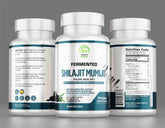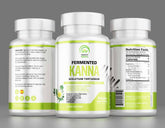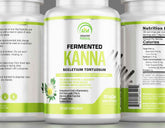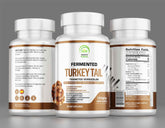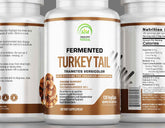Good Manufacturing Practices
GMP Standards in the Dietary Supplement Industry: What to Know
The dietary supplements industry has experienced remarkable growth over the past few decades. Consumers are increasingly seeking products to enhance their health and wellness, ranging from vitamins and minerals to herbal extracts and probiotics. However, with the rising demand for dietary supplements, the importance of ensuring their safety, quality, and efficacy has never been greater. This is where Good Manufacturing Practices (GMP) come into play.
Good Manufacturing Practices are a set of guidelines that manufacturers must follow to ensure their products are consistently produced and controlled according to quality standards. GMPs cover all aspects of production, from the raw materials used, premises and equipment, training and personal hygiene of staff, to the final product. Adhering to GMPs is crucial in the dietary supplements industry to safeguard public health and maintain consumer trust.
The Importance of Good Manufacturing Practices
Good Manufacturing Practices are essential for several reasons:
-
Ensuring Product Quality: GMPs help ensure that dietary supplements are of high quality. This includes making sure that the products are free from contaminants and that they contain the ingredients they claim to have in the right amounts.
-
Consumer Safety: By following GMPs, manufacturers can minimize the risk of adverse effects caused by contaminated or improperly formulated products. This is crucial in protecting the health of consumers.
-
Building Trust: Consumers trust brands that adhere to high standards of production. GMPs help build and maintain this trust by ensuring that products are safe and effective.
-
Regulatory Compliance: While this blog will not delve into FDA regulations, it is worth noting that adhering to GMPs often aligns with regulatory requirements, helping companies avoid legal issues and recalls.
-
Market Competitiveness: Companies that adhere to GMPs can use this as a selling point, distinguishing themselves from competitors who may not follow these practices as rigorously.
Core Components of Good Manufacturing Practices
Good Manufacturing Practices encompass a wide range of practices and guidelines. Here, we will explore the core components that are particularly relevant to the dietary supplements industry.
Facility and Equipment
The physical environment where dietary supplements are manufactured plays a crucial role in ensuring product quality and safety. GMPs require that facilities and equipment be designed, maintained, and operated in a way that prevents contamination and ensures consistent product quality.
Facility Design and Maintenance
-
Layout and Design: The facility layout should promote a logical flow of materials and personnel to minimize the risk of cross-contamination. This includes separating areas for raw material storage, production, packaging, and finished goods.
-
Cleanliness and Sanitation: Regular cleaning and maintenance of the facility are essential. GMPs require written procedures for cleaning and sanitation, including the frequency and methods used.
-
Pest Control: Effective pest control measures must be in place to prevent contamination from rodents, insects, and other pests. This includes regular inspections and the use of traps or other control methods.
-
Environmental Monitoring: Regular monitoring of environmental conditions, such as temperature and humidity, is necessary to ensure they remain within acceptable limits. This is particularly important for sensitive ingredients that can degrade under certain conditions.
Equipment Maintenance and Calibration
-
Equipment Design and Installation: Equipment should be designed and installed to facilitate easy cleaning and maintenance. It should be made from materials that do not react with the product and do not contribute to contamination.
-
Maintenance Procedures: Regular maintenance of equipment is crucial to ensure it operates correctly and does not introduce contaminants into the product. This includes routine inspections, lubrication, and replacement of worn parts.
-
Calibration: Equipment used for measuring, weighing, and testing must be regularly calibrated to ensure accuracy. This includes scales, thermometers, pH meters, and other instruments.
Personnel and Training
The competence and behavior of personnel are critical factors in maintaining GMP standards. Proper training and hygiene practices are essential to prevent contamination and ensure consistent product quality.
Training Programs
-
Initial and Ongoing Training: All personnel involved in the manufacturing process must receive initial training in GMPs and the specific procedures relevant to their roles. Ongoing training should be provided to keep staff updated on new procedures and regulatory changes.
-
Training Documentation: Records of all training sessions should be maintained, including the topics covered, the date, and the names of attendees. This documentation helps ensure accountability and track the progress of individual employees.
-
Competency Assessments: Regular assessments should be conducted to ensure that personnel have understood and can apply the training they have received. This can include written tests, practical demonstrations, and on-the-job evaluations.
Personal Hygiene
-
Hygiene Policies: Written policies should be in place outlining the hygiene requirements for all personnel. This includes hand washing procedures, clothing and protective gear requirements, and guidelines for illness reporting.
-
Hand Washing Facilities: Adequate hand washing facilities should be available in all areas where raw materials, intermediate products, or finished products are handled. These facilities should be equipped with soap, sanitizer, and disposable towels or hand dryers.
-
Protective Clothing: Personnel should wear appropriate protective clothing, such as lab coats, gloves, hairnets, and shoe covers, to prevent contamination. Clothing should be changed regularly and laundered appropriately.
-
Health Monitoring: Regular health checks should be conducted to ensure that personnel are not suffering from illnesses that could contaminate the product. Employees should be required to report any illnesses or symptoms that could affect product safety.
Raw Materials and Supply Chain Management
The quality of raw materials directly impacts the quality of the final product. GMPs emphasize stringent control over the selection, testing, and handling of raw materials to ensure they meet the necessary quality standards.
Supplier Qualification and Approval
-
Supplier Evaluation: Suppliers should be evaluated and approved based on their ability to consistently provide materials that meet quality specifications. This evaluation can include on-site audits, reviewing quality control procedures, and assessing past performance.
-
Approved Supplier List: A list of approved suppliers should be maintained, and only these suppliers should be used for sourcing raw materials. This helps ensure consistency and traceability.
-
Supplier Agreements: Written agreements should be in place with suppliers, specifying the quality standards and requirements for the materials provided. These agreements should also outline the procedures for handling non-conforming materials.
Raw Material Testing and Verification
-
Incoming Inspection: All raw materials should be inspected upon receipt to verify that they meet quality specifications. This can include visual inspections, sampling, and laboratory testing.
-
Certificates of Analysis (CoA): Suppliers should provide Certificates of Analysis for each batch of raw materials, detailing the results of quality tests. These CoAs should be reviewed and verified against internal specifications.
-
Quarantine and Release Procedures: Raw materials should be quarantined upon receipt and only released for use after they have passed inspection and testing. This helps prevent the use of substandard or contaminated materials.
Storage and Handling
-
Storage Conditions: Raw materials should be stored under conditions that prevent contamination and degradation. This includes controlling temperature, humidity, and light exposure as necessary.
-
Inventory Management: A first-in, first-out (FIFO) inventory system should be used to ensure that older materials are used before newer ones. This helps prevent the use of expired or degraded materials.
-
Handling Procedures: Written procedures should be in place for the handling of raw materials to prevent contamination and ensure traceability. This includes guidelines for transferring materials, labeling, and documentation.
Production and Process Control
The production process must be carefully controlled to ensure that dietary supplements are consistently produced according to quality specifications. GMPs require detailed documentation and monitoring of each step in the production process.
Standard Operating Procedures (SOPs)
-
Written Procedures: Detailed written procedures should be in place for all aspects of production, from weighing and mixing to packaging and labeling. These SOPs help ensure consistency and minimize the risk of errors.
-
Document Control: All SOPs should be controlled and regularly reviewed to ensure they remain up-to-date and accurate. Changes to procedures should be documented and communicated to all relevant personnel.
-
Training on SOPs: Personnel should be trained on the SOPs relevant to their roles. This training should be documented, and periodic refresher training should be provided.
In-Process Controls
-
Monitoring Critical Parameters: Critical parameters, such as temperature, humidity, and mixing times, should be monitored and recorded during production. This helps ensure that the process remains within the specified limits.
-
In-Process Testing: Regular testing should be conducted during production to verify that the product meets quality specifications. This can include weight checks, pH testing, and microbiological sampling.
-
Deviation Management: Procedures should be in place for handling deviations from the specified process. This includes identifying the root cause of the deviation, implementing corrective actions, and documenting the incident.
Packaging and Distribution
The packaging and distribution of dietary supplements are critical stages in the manufacturing process. Proper packaging helps protect the product from contamination and degradation, while effective distribution ensures that products reach consumers in good condition.
Packaging Materials and Design
-
Material Selection: Packaging materials should be selected based on their ability to protect the product from environmental factors, such as light, moisture, and oxygen. Materials should also be non-reactive with the product.
-
Packaging Design: The design of the packaging should facilitate easy and secure sealing, labeling, and storage. It should also consider the convenience and safety of the end user.
-
Supplier Qualification: Packaging material suppliers should be qualified and regularly evaluated to ensure they meet quality standards. This includes reviewing their quality control procedures and past performance.
Packaging Operations
-
Controlled Environment: Packaging operations should be conducted in a controlled environment to prevent contamination. This includes maintaining cleanliness and monitoring environmental conditions.
-
In-Process Checks: Regular checks should be conducted during packaging to ensure that the correct materials and labels are used and that the packaging is properly sealed. This helps prevent mix-ups and contamination.
-
Traceability: Each batch of packaged product should be assigned a unique identification number to facilitate traceability. This helps in tracking products through the distribution chain and managing recalls if necessary.
Distribution and Storage
-
Distribution Controls: Procedures should be in place to ensure that products are stored and transported under conditions that maintain their quality and integrity. This includes controlling temperature and humidity during transportation.
-
Inventory Management: Effective inventory management practices should be in place to ensure that products are distributed on a first-in, first-out basis. This helps prevent the distribution of expired or degraded products.
-
Documentation and Records: Detailed records should be maintained for all distribution activities, including shipping dates, quantities, and destinations. This documentation helps in tracking products and managing recalls if necessary.
Continuous Improvement and Audits
Good Manufacturing Practices are not static; they require ongoing evaluation and improvement. Regular audits and continuous improvement initiatives are essential to maintaining and enhancing GMP standards.
Internal Audits
-
Audit Schedule: Regular internal audits should be conducted to assess compliance with GMPs. The frequency of audits should be based on the complexity of the processes and the risk associated with the products.
-
Audit Teams: Audits should be conducted by trained personnel who are independent of the area being audited. This helps ensure objectivity and thoroughness.
-
Audit Reports: Detailed reports should be prepared for each audit, documenting findings and recommendations. These reports should be reviewed by senior management and used to drive improvements.
Corrective and Preventive Actions (CAPA)
-
Identifying Issues: The CAPA process involves identifying issues that have occurred or that could potentially occur. This includes non-conformances, deviations, and audit findings.
-
Root Cause Analysis: For each issue identified, a root cause analysis should be conducted to determine the underlying cause. This helps in developing effective corrective and preventive actions.
-
Implementation and Monitoring: Corrective and preventive actions should be implemented in a timely manner and their effectiveness monitored. This includes updating procedures, retraining personnel, and making changes to equipment or processes as necessary.
Continuous Improvement
-
Performance Metrics: Key performance metrics should be established to monitor the effectiveness of GMPs. This includes metrics for product quality, process efficiency, and compliance.
-
Regular Reviews: Regular reviews of performance metrics and audit findings should be conducted to identify areas for improvement. This helps in prioritizing improvement initiatives and allocating resources effectively.
-
Employee Involvement: Continuous improvement should involve all levels of the organization. Employees should be encouraged to identify and suggest improvements, and their contributions should be recognized and rewarded.
Challenges and Best Practices in Implementing GMPs
Implementing Good Manufacturing Practices in the dietary supplements industry can be challenging due to the complexity of the processes and the need for stringent control. However, there are several best practices that can help overcome these challenges and ensure successful implementation.
Challenges
-
Resource Constraints: Implementing GMPs can be resource-intensive, requiring significant investment in facilities, equipment, and training. Small and medium-sized enterprises (SMEs) may find it particularly challenging to allocate the necessary resources.
-
Complex Supply Chains: The dietary supplements industry often involves complex supply chains with multiple suppliers and intermediaries. Ensuring consistent quality and traceability across the supply chain can be difficult.
-
Regulatory Variability: Different countries have different regulatory requirements for dietary supplements. Navigating these regulations and ensuring compliance can be challenging, particularly for companies that operate in multiple markets.
-
Keeping Up with Changes: The field of dietary supplements is continuously evolving, with new ingredients, formulations, and technologies emerging. Keeping up with these changes and updating GMPs accordingly can be challenging.
Best Practices
-
Investing in Training: Regular and comprehensive training programs are essential for ensuring that all personnel understand and can apply GMPs. This includes initial training, ongoing refresher training, and specialized training for specific roles.
-
Leveraging Technology: Technology can play a significant role in streamlining GMP implementation. This includes using software for document control, electronic batch records, and automated monitoring systems.
-
Building Strong Supplier Relationships: Establishing strong relationships with suppliers can help ensure consistent quality and improve communication. This includes regular audits, clear quality agreements, and collaborative problem-solving.
-
Fostering a Quality Culture: Creating a culture that prioritizes quality and continuous improvement can help ensure that GMPs are consistently applied. This includes recognizing and rewarding employees who contribute to quality initiatives.
-
Regular Reviews and Updates: Regularly reviewing and updating GMPs based on audit findings, regulatory changes, and industry developments can help ensure they remain effective and relevant.
Conclusion
Good Manufacturing Practices are a cornerstone of the dietary supplements industry, ensuring that products are safe, effective, and of high quality. By adhering to GMPs, manufacturers can protect consumer health, build trust, and maintain competitiveness in the market. The core components of GMPs, including facility and equipment management, personnel training, raw material control, production and process control, packaging and distribution, and continuous improvement, provide a comprehensive framework for achieving these goals.
While implementing GMPs can be challenging, best practices such as investing in training, leveraging technology, building strong supplier relationships, fostering a quality culture, and regularly reviewing and updating practices can help overcome these challenges. Ultimately, a commitment to GMPs is a commitment to excellence, ensuring that dietary supplements meet the highest standards of quality and safety.
Quality Control and Testing in the Dietary Supplement Industry: Ensuring Safety and Efficacy
Quality control and testing are essential to maintaining consumer trust, protecting public health, and ensuring that the supplements deliver the benefits they claim..
- Choosing a selection results in a full page refresh.



